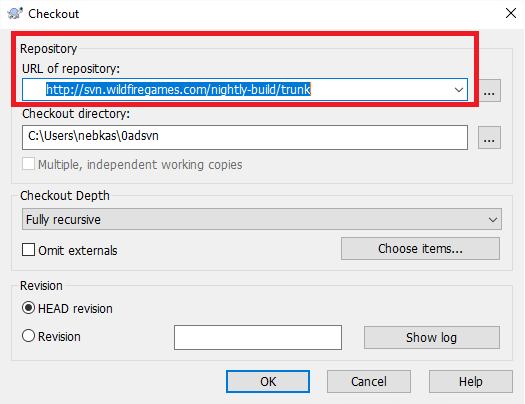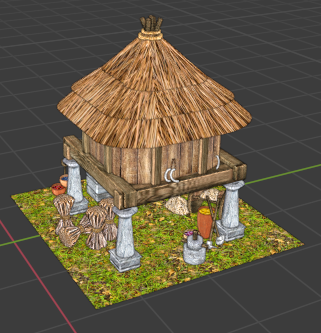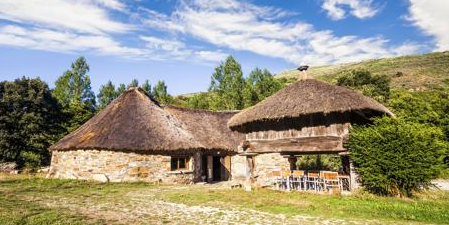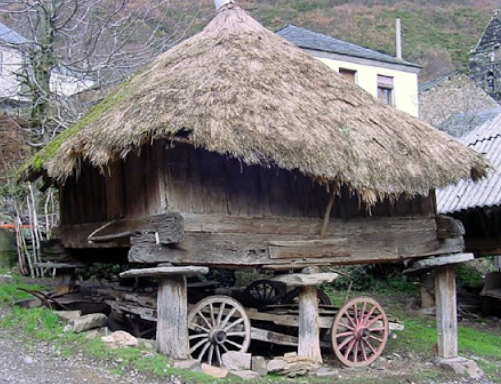Leaderboard
Popular Content
Showing content with the highest reputation on 2021-01-17 in all areas
-
3 points
-
The ones of you who have a close eye on the recent commits and patches in the queue will have noticed that there are efforts being made to further differentiate the current civs either by unique bonuses and/or buildings. I am assuming that I am not the only one seeing great potential for Spartans in that direction, especially since the removal of their pop penality leaves room for new things. I think it is time to share my ideas from a mod draft made several years ago, but never finished/published. See the following description and proposals as an inspiration for new/alternative/enhanced Spartan gameplay. The core idea is to really push the Spartan trademarks: the absolute crème de la crème regarding quality, especially in the defensive part, at the cost of reduced quantity and a lot of time and resources spent to bring their warriors to perfection. In lategame they should be near unstoppable - only the infamous man spam train should do the job - being among the strongest civs, preferably the strongest alone. A Spartiate phalanx (even more so with Leonidas) should feel like an immovable object similar to Carthaginian walls. Their offensive should be very slow, but deadly (cf. Teutonic knights in AoE II). They will fight like a beast to defend their home territory and shine the most in team games where they can occupy and block strategic positions. However, they should be especially vulnerable in early game / village phase and below average in mid game / town phase (careful, detailed and well-targeted balancing may be needed) in order to compensate for their incredible late game potential. They are characterized by the following unique features: tech "The Agoge": waaay more impactful than now - Spartiates cost around 2 times the resources of regular champions (including 2 population), optionally only one of them can be trained per house - they should be able to 1v2 regular champions, and with all other bonuses described below even 1v3 should be possible (at least under some circumstances) -> reduced quantity, better overall quality, slightly more cost efficient than other champions tech "Hippagretae": these were the guys electing the ~300 best Spartiates called Hippeis - Spartiates can upgrade to stronger Hippeis after collecting some XP (killing 2-3 enemies) (like citizen soldiers from basic -> advanced rank) - optionally Hippeis can further upgrade to some kind of semi-hero after collecting a huge amount of XP (killing 7 or 10 enemies), but that may be over the top (like citizen soldiers from advanced -> elite rank) -> better overall quality CC aura "Wall of Men": some Greek author used this term to explain why Sparta didn't need walls - +2 resistance for Spartiates in a 80 range around CCs - alternatively more concentrated: +4 resistance in a 30 range around CCs -> better defensive quality Leonidas hero aura "Thermopylae": replacing current offensive aura by a purely defensive one - +2 resistance and -10% speed for spearmen in his formation - alternatively +3 resistance and -15% speed for Spartiates in his formation -> better defensive quality better represent the role of Spartan women and Helote slaves - Helote slaves as most efficient gatherers (use slave actor from Athenians) - Spartan women have less than mediocre gather rates themselves, but a gather boost aura for Helotes (being their mistress) - Spartan women have a basic combat ability, suitable for creating an emergency home defence against citizen soldiers (but not against champions) and they are able to build all buildings including military ones -> more complex economy, slow development, but higher potential (for the huge amount of resources needed for unique techs and champions) -> slightly better defensive quality I hope you find at least some of these ideas inspiring and suitable as a basis for more patches to come! Feedback and further ideas welcome Best regards, Palaxin2 points
-
2 points
-
2 points
-
2 points
-
2 points
-
2 points
-
1. Download and install TortoiseSVN Dowlnoadpage https://tortoisesvn.net/downloads.html Standard setting during install will work After finishing installation create a new folder in your Userdirectory. It should be located in "C:\users\username" . I called my directory "0adsvn" Then right click on the new created directory and choose "SVN Checkout..." In the Checkout mask just enter the URL of repository: "http://svn.wildfiregames.com/nightly-build/trunk" Then click on "OK" Now it starts downloading the 0ad Nightly version. Depending on your Inet speed this will take 20-45 minutes and needs around 14GB free HardDisk Space After the checkout is complete, you can start the SVN game from the "pyrogenesis.exe" binary wich is located in your created folder under \binaries\system\ I created a shortcut for this and placed it on my desktop. Dont forget to updated your 0ad SVN copy every time you going to play in svn. This can easily be done by right click on your 0adsvn directory and choosing "SVN Update" Have fun1 point
-
lusitanos chronology by the history museum of extremadura https://www.timetoast.com/timelines/edad-antigua-en-extremadura history summary https://elblogdeacebedo.blogspot.com/2017/08/el-origen-de-la-cultura-celta.html?spref=pi viriato monument Iberian fortress never used and it seems that it was created to demonstrate the power of a leader would serve as a wonder In the following days I will be putting more in my thread, so as not to saturate the other with existing information1 point
-
1 point
-
https://www.almendron.com/blog/el-santuario-tartesico-de-cancho-roano/ https://es.wikipedia.org/wiki/Cancho_Roano1 point
-
Buenos días/tardes Muchas gracias por su comentario La estética que les presento es la que pretendo que tengan los edificios ( a menos que no sea históricamente y arqueológicamente preciso) , pero sigo investigando , descubriendo y rectificando errores por lo que creo que seguiré haciendo bocetos de cada edificio por dos o tres semanas hasta que se me acaben las vacaciones También voy practicando con el editor 3D y al manejarlo mejor puedo crear nuevos elementos que antes habría omitido solo porque no sabría crearlos -Entre esas rectificaciones está la Granja lusitana, Boceto viejo de la granja; (vista frontal) ----------------------------------------------------------------------------------------------------------------------- Boceto nuevo ; -Granero lusitano "Hórreo" (vista frontal) (vista trasera) Referencias; (los edificios no son solo reconstrucciones para turistas , muchos (+60 aprox.) se usan actualmente en España y Portugal ) Existen descripciones de historiadores y militares griegos y romanos desde el siglo II A.C en el que se hace referencia a estos edificios en las culturas de influencia celta en la península , como el la Celtiberia. Una de las fuentes... Distribución actual; Disculpen las molestias*1 point
-
A while ago I wrote a similar thing to that but with a lot more detail; it didn't get much buzz probably because it was long, a fair critique, but here it is: A few things I think would be good takeaways: Sparta should have access to Spartan hoplites at the beginning of the game, with a Spartan hoplite being a starting unit. Another thing was that cavalry would not be available until the town phase. Scouting instead could be done by building a barracks and training a Skiritae unit. For the Spartan hoplite in general, my focus was more around the fact that they could have auras that could buff friendly units and debuff enemies at the cost of an almost crippling training time that could be shortened through a variety of technologies.1 point
-
The way DE does it is with Hero selection. For instance with Sparta, if you choose Leonidas you get hoplite units, while if you choose Cleomenes III (who reformed the Spartan army to counter the Antigonid Macedonians) you get phalangite units. Heroes are more integral to the game in DE though.1 point
-
1 point
-
1 point
-
No, we're just single-threading really. The problem I was describing is that e.g. unit Motion can right now send messages to any other component, there's no "barriers". Essentially at the moment the only things we can really thread from the rest of the game are (NB: they are not threaded yet) - The range queries, which have their own data (but they need some clever thread pooling, starting a thread every time would be too slow) - the pathfinder, which also has its own data - AIs Yeah that's a know issue. The problem is that pathfinding is slow enough that fixing it properly was not really attainable in the past. Once the pathfinder is threaded, it'll probably be more doable. The visual field (LOS/Fog Of War) is computed per player, but AIs don't use it. The problem is that AIs are designed for threading, and that requires giving them their copy of the data, and we never got around to giving them their copy of LOS data. --- Most of the problems are known, but need a lot of rather substantial work usually. You're welcome to help1 point
-
1 point
-
Another problem: With most civilizations, a house supports 10 units; but if you are Indian, a house supports only 5 people. You have to spend so much time building houses you almost can't do anything else. Of course it makes sense that there be differences between civilizations; but a change for the worse with an item that borders on being a pure irritant by a whopping factor of two is a bit much. Could it be made to support 8 units, maybe? Otherwise, it's like start a game with random civ, but if India comes up, quit and start again. There's also the consideration of real world consistency. Are people in India more isolated than other civilizations? Do they really accomodate less people in each house than Persians, Greeks, Romans or Egyptians? I can't see this being the case. My feeling is that this number, 5, was totally randomly picked.1 point
-
1 point
-
1 point
-
1 point
-
1 point
-
Buenos días/tardes Gracias @wowgetoffyourcellphone por su comentario y tomo nota, intento hacer que los edificios tengan la misma estructura que las demás "Civs" (o eso intento ahora con los nuevos bocetos) pero me es muy complicado ya que los edificios lusitanos SON CIRCULARES y quedan pocos restos arqueológicos ( por eso edificios como las torres defensivas no las he creado) porque intento ser fiel a la historia y si no hay vestigios de un edificio yo no me lo voy a inventar Si alguien encuentra más restos arqueológicos lusitanos me sería de gran ayuda Un rasgo interesante de los lusitanos es su arquitectura poco común o eso creo... Sobre todo en los nuevos bocetos estoy intentado dar una distribución y aspecto diferente a cada edificio y poner elementos únicos en cada estructura como ; -Estatuas , ofrendas , sacrificios animales , un altar ... en el Templo. -Armas , escudos y elementos bélicos ... en las Barracas/Cuartel. -Azadas , fardos de paja , hoz , aperos de labranza ... en la Granja -Telas y mercancías en el Mercado . etc.. Pero recuerdo que de momento esto son Bocetos y cualquier crítica o sugerencia me sirve de mucho para mejorar Disculpen las Molestias*1 point
-
I like this. If you calculate camel top speed vs horse top speed irl a camel would be about 25% slower. I like this too. But because you hire mercs they shouldnt cost food/wood in my opinion, just raise the stone/metal price. Even though most people think slingers are OP, i think the balance between archers/slingers/skirmishers is nearly perfect in itself. It's the army with the better mix (or straight up fantasy heal spam) or micro that often comes out on top.1 point
-
You are correct when it comes to Arabic, there is only one written form of it, and it is understood by all Arabic-speaking audiences, so there is no need to have specializations for each country, in fact, the players will expect one Arabic language option to be available, more is just confusing for the players and makes translation way harder since other specializations are not standard Arabic, just local dialect used in day to day life in that country, and it is not expected to be fully understood by other people outside that country, but on the other hand, standard Arabic is used in official matters, and when understood, it is understood the same way by all of the people that know how to read it. So this basically explains the 0% in translation in those. So feel free to drop these and only keep one Arabic language option. Arabic (Egypt) Arabic (Iraq) Arabic (Saudi Arabia) I also took it upon my self to help translate into Arabic a little bit, although i find it hard to translate names of places or people (you'd need someone with a background in ancient history, even googling and matching doesn't yield a correct answer, so it is acceptable to translate those names literally letter by letter.1 point
-
I like where this is going. It would certainly improve familiarity for JavaScript developers if we use a more common unit test framework rather than something in-house. I would suggest a few alterations so as to increase the value of the unit test: Run it from the command-line rather than from a browser. This will make it easier to run from Jenkins and extract the results in an automated fashion, and it'll be easier that way for developers to continue to (also) run it as part of "make test". The actual code is not meant to be run inside a web browser, which means trying to make it work there including file tracking and loader mechanisms, would significantly limit future developments and add on-going costs, without actually benefiting the game or code quality in any way. There's also the risk of false positives from tests passing inside a browser, but not in the actual game due to differences in environment. Run it using the SpiderMonkey engine (the mozjs engine that 0AD uses) and not V8, Chrome, or Node.js. There are significant differences in how these engines work internally, also with regards to syntax features and quirks etc. There is no need to run it in a different engine, that's kind of like testing a Firefox extension inside Internet Explorer. I believe a unit test is a test where you control (or inject) any and all dependencies and only act and observe a single subject (e.g. a class, module, or method). Thus not causing side-effects in global state elsewhere, and not causing dependencies to be implicitly pulled in. An integration test is where e.g. you act on and observe multiple subjects, and where e.g. you may let your application's entry point implicitly construct its dependencies and inject them, rather than doing so implicitly. In complex code bases, to achieve this, we often mock the dependencies and/or not load the primary engine, but to me this is by no means a logical requirement for something to be considered a unit test. When testing a Library class, it seems perfectly valid to me to test that by injecting an array of (stateless) Book objects into its constructor, and then only calling Library methods and observing its return behaviours. If Book is not stateless or if Book is difficult to instantiate, then it may be easier to mock it, but otherwise that would needlessly reduce the accuracy of the unit test. Likewise, I don't see an issue with exposing the Pyrogenesis engine to the unit test. Its native methods are conceptually no different from the native methods of the JavaScript runtime's own utility methods, so long as we use them within the spirit of a unit test. Beyond that, duplicating a lot of code would be busy work with little to no added value, unless for some reason we can't figure out how to load the engine, in which case we'd take on that added cost as a way to make unit tests possible at all. I think it's quite feasible to pull this off. We can decouple the current test target, and load a test framework like Jasmine there. We can also add code coverage reports by instrumenting the code first through Instanbul, and extracting data afterward. Then after the run we can use Node.js tooling to produce nice web pages as build artefact to visualise the code coverage reports. We can make compiling and importing the Pyrogenesis engine optional, so that we have a fast "make" target for unit tests, and a slower one for integration tests, but otherwise use the same JS engine, test framework, and code coverage pipeline. I'll try to put together a proof-of-concept over the next couple weeks to show what I have in mind.1 point
-
The migration has been finished; the new dedicated server is in use for all our online services. The old server will be cancelled on the 13th of January (first possible date). I'll securely wipe the harddisks before that date.1 point
-
I don't think anyone cares about this anymore. Since we surpassed 2 years, * AD have a longer release cycle than Debian. But yes, given that the eastern civs are 90% finished this is not an unreasonable expectation.1 point
-
While you have good evidence and the argument is sound, I would personally see it a different ways. First, Sparta was not unique in being formerly a collection of smaller villages that banded together. That is typically the way that ancient urbanisation occurred in Greece and Etruria. Considering its centralised government, it was just about as unified as cities like Syracuse or Athens. While Sparta did not offer the most aggressive policy in the during the Persian Wars, its habits changed following the Peloponnesian Wars. Much of the time it kept itself busy enforcing oligarchic ideologies on city-states and even heading campaigns against Persia. Definitely this changed following the Battle of Leuctra, but they even had their shot at rising to power through the work of Cleomenes III... which was promptly crushed. Regardless, my hope is for an open-ended design of how players can adapt their play-styles. Definitely there is a focus to Sparta; it is an infantry-centric civilisation, but my hope is that despite that fact, it would remain a potent force that does not always necessitate a passive strategy.1 point
-
0 points


















.thumb.jpg.b21ca1d0c15fb56b42c39b25a0a40815.jpg)



























.thumb.png.f3f47d08fd1bf1063ea4b371390681b4.png)

.thumb.png.ce58cea22940c255f5b0a735d5abee36.png)